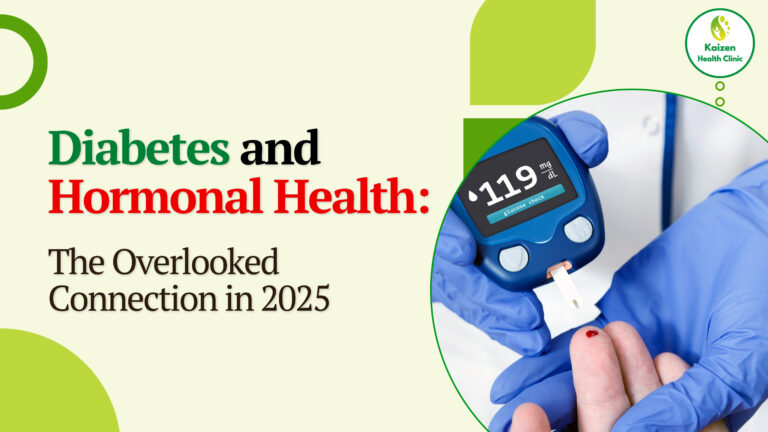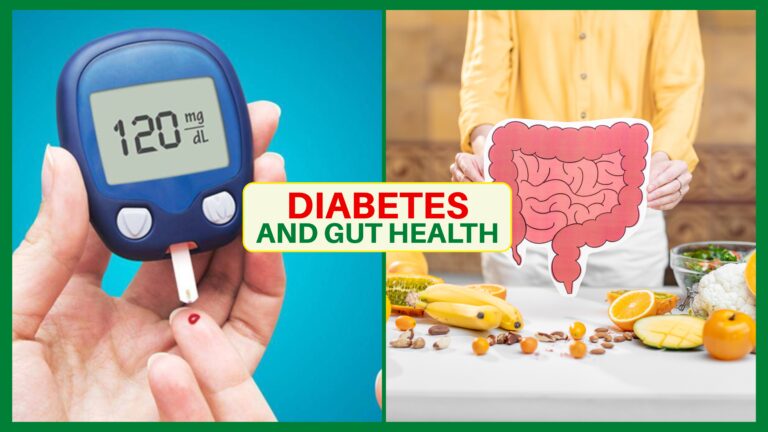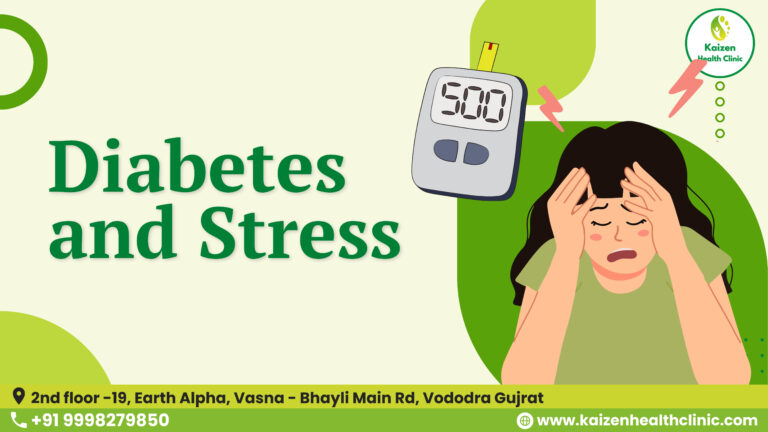Diabetes and Hormonal Health: The Overlooked Connection in 2025 Explore the powerful link between diabetes and hormonal health in 2025. Learn how hormones affect blood sugar and how to naturally balance them for better diabetes control. Table of Contents Introduction When managing diabetes, most people focus on diet, medication, and exercise. But in 2025, science is proving that hormonal health plays a vital role in blood sugar regulation. Hormones act as the body’s messengers, influencing everything from metabolism to appetite. Understanding the link between diabetes and hormonal health can be a game-changer in reversing or controlling diabetes naturally. How Hormones Influence Blood Sugar Hormones regulate how your body processes and stores energy. When hormone balance is disrupted, your body may struggle to regulate blood sugar levels effectively. Key processes influenced by hormones include: Key Hormones That Affect Diabetes Latest 2025 Research on Hormonal Health and Diabetes Signs Your Hormones Are Affecting Your Diabetes Natural Ways to Balance Hormones for Better Diabetes Control Foods and Lifestyle Changes for Hormonal Balance Hormonal Health and Diabetes: Expert Tips Conclusion The relationship between diabetes and hormonal health is powerful yet often overlooked. By understanding how hormones influence your blood sugar and taking active steps to balance them, you can gain better control over diabetes and overall well-being. 📌 Bottom Line: Treat diabetes not just as a sugar problem but as a hormonal balance issue. In 2025, hormone health is central to reversing diabetes naturally.
1. Introduction: Mango for Diabetes and Weight Loss – Sweet and Smart?
If you think mango is off-limits due to its sugar content, it’s time to rethink. Mango for diabetes and weight loss is not just a possibility — it’s a strategic choice when done right. Often feared by diabetics and weight watchers, mangoes are actually nutrient powerhouses that can support healthy living.
Let’s explore why mango deserves a place in your diet even if you’re managing diabetes or aiming to lose weight.
2. Can Diabetics Eat Mango Safely?
Yes, absolutely — in moderation. The glycemic index (GI) of mango is around 51–56, which is in the low to moderate range.
✅ Why Mango for Diabetes Works:
-
Rich in fiber: Slows down sugar absorption.
-
Mangiferin: A unique antioxidant shown to improve insulin sensitivity.
-
Natural sugars + nutrients: Better than refined sugary snacks.
🟢 Smart Tip: Combine mango with protein (nuts or Greek yogurt) to minimize blood sugar spikes.
🔗 External Link: American Diabetes Association on fruit and diabetes
3. Mango for Weight Loss: A Sweet Advantage
Mangoes are naturally low in fat and calories and high in fiber, enzymes, and antioxidants. These properties help boost metabolism and improve digestion.
🔥 Key Weight Loss Benefits:
-
High satiety index: Keeps you full.
-
Aids fat metabolism: Thanks to polyphenols.
-
Boosts gut health: With digestive enzymes like amylase.
✅ Enjoy it pre-workout or as a healthy dessert alternative.
4. Mango and Disease Prevention: Beyond Blood Sugar
Mango is a potent anti-inflammatory and antioxidant-rich fruit.
🛡️ Health Benefits:
-
Heart Health: Mangiferin and fiber lower LDL cholesterol.
-
Immunity Boost: Vitamin C, A, and E strengthen the immune system.
-
Eye Health: Beta-carotene supports vision.
-
Liver Support: Mango may improve liver enzyme function.
5. How to Eat Mango Smartly for Blood Sugar Control
-
✅ Portion: 80–100g (½ cup diced mango)
-
🕒 Best Time: Mid-morning or pre/post-workout
-
🍽️ Combine With: Proteins or fats (nuts, yogurt)
-
❌ Avoid: Juices, smoothies with added sugar, or large portions
6. Mango Portion Guide for Diabetics & Weight Loss
| Goal | Portion Size | Frequency | Pair With |
|---|---|---|---|
| Diabetes Management | ½ cup | 2–3x/week | Greek yogurt, nuts |
| Weight Loss | 100–150g | 3–4x/week | Lean protein, chia |
| Disease Prevention | 1 slice/day | Seasonal | High-fiber breakfast |
7. Conclusion: Mango for Diabetes and Weight Loss is Possible – If You Eat It Right
The myth that mangoes are unhealthy for diabetics or those trying to lose weight has been debunked by science. With its fiber, antioxidants, enzymes, and vitamins, mango supports blood sugar stability, fat burning, and even disease prevention.
So yes, mango for diabetes and weight loss is not just safe — it’s smart. You just need the right strategy.
8. FAQs – Mango for Diabetes and Weight Loss
Q. Can mango spike blood sugar levels in diabetics?
A: If eaten in moderation with protein or fat, mango does not cause a sharp spike.
Q. Is mango helpful for belly fat reduction?
A: Mango improves satiety and digestion, which helps reduce overeating and supports fat loss.
Q. What’s the best time to eat mango for weight loss?
A: Mid-morning or pre-workout is ideal.






